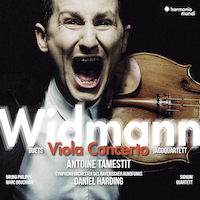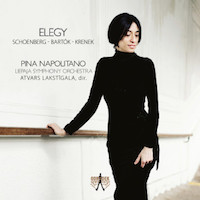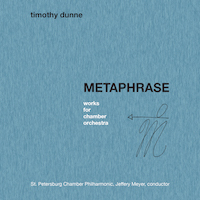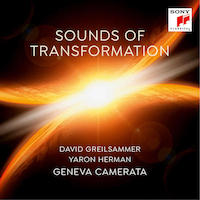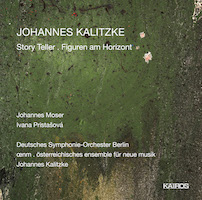Concerto Concentrations 4.
|
Grant Chu Covell [January 2019.]
Jörg WIDMANN: Viola Concerto (2015)1; Nine Selections from 24 Duos (2008; arr. TAMESTIT)2; String Quartet No. 3, “Jagdquartett” (2003)3. Antoine Tamestit1,2 (vla), Marc Bouchkov2 (vln), Bruno Philippe2 (vlc), Signum Quartett3: Florian Donderer, Annette Walther (vln), Xandi van Dijk (vla), Thomas Schmitz (vlc), Symphonieorchester des Bayerischen Rundfunks1, Daniel Harding1 (cond.). Harmonia Mundi 902268 (1 CD) (http://www.harmoniamundi.com/). Tamestit’s expression on the cover portends frenzy, and the title of Widmann’s Third quartet, Jagdquartett, which ambiguously embraces hunter and hunted, indirectly underscores it. The soloist’s activity suggests pursuit and mania. Indeed, the violist charts a busy path strolling around the orchestra. The first sounds are tapping and drumming upon the instrument body, gradually enhanced with pizzicato. The soloist starts at one side of the stage, discovering a bow only at the end of the first movement which he flourishes like a sword. The third and fourth movements are brisk confrontations before an Aria which concludes with the violist tuning down the low C string until it no longer sounds. Admittedly much of the theatre is lost on a recording, but the vigor and commitment impress. Originally devised for violin and cello, Tamestit arranged nine of 24 Duos to include viola, so that some pair violin and viola (Nos. 9, 14, 15 and 21) and some are for viola and cello (Nos. 5, 6, 12, 16 and 22). They are played in the order 9, 14, 15, 16, 12, 5, 6, 21 and 22. They’re appealing slivers, suggesting Bartók’s violin pairings now and again (No. 14, Capriccio) or bits that tease with familiar genres (No. 21, Valse bavaroise). The “Hunting Quartet” is an exceptionally intense single movement, with gestures recalling Haydn, but emphatically enhanced with modern scrapes and harmonics, and, yes, more unnerving shrieking. Kudos to the Signum Quartett for their agility and unbridled exuberance.
“Elegy.” Arnold SCHOENBERG: Concerto for Piano and Orchestra, Op. 42 (1942); Begleitungsmusik zu einer Lichtspielscene, Op. 34 (1929). Ernst KRENEK: Symphonic Elegy for String Orchestra, Op. 105 (1946). Béla BARTÓK: Piano Concerto No. 3 (1945). Pina Napolitano (pno), Liepaja Symphony Orchestra, Atvars Lakstīgala (cond.). Odradek ORDCD339 (1 CD) (https://www.odradek-records.com/). Others may tackle the Concertos at an appreciably faster clip, a distinction which might astonish listeners, although because the Schoenberg is relatively unfamiliar, the first impression may be one of freshly discovered lyricism. I had wondered whether the Liepaja Symphony Orchestra could not deliver the requisite thorny clarity, however Lakstīgala’s slower pacing does result in more articulate voicing. By compare, Uchida and Boulez (Philips 468 033-2) are faster and seem to say “this is hard, you’ll never understand it, so let’s get it over with quickly.” Gould and Kraft are about the same speed as Napolitano and Lakstīgala for the Schoenberg’s opening Andante. Bartók’s Third may in fact be too slack. At this pace, Bartók’s consonant tunefulness becomes pedantic, and the last movement is several beats less than a true Allegro vivace. We do not hear Begleitungsmusik often enough. This 10-minute score for an imaginary film offers a subtitle (threatening danger, fear and catastrophe) which could apply to so much other Schoenberg. It is a wonderful reflection of the composer’s powerful imagination, or perhaps reflective of his anxieties. The major works here were written by emigres in America (Begleitungsmusik was penned in Berlin) who often times softened their styles on these shores. Krenek’s Elegy mourns the recent murder of Webern, accidentally shot by an American soldier the year before. However, the string orchestra movement is not in Webern’s style, but in a spiky serialism draped with flowing Romantic lines.
“Metaphrase.” Timothy DUNNE: Braid for Violin and Chamber Orchestra (2013-14); Ground (2014); Margarita Metaphrase (2007; rev. 2014); Concert for Piano and Chamber Orchestra (2007, 2013). Artur Zobnin (vln), Irina Vassilvea (sop), Alexandra Shatalova (e-hrn), James Giles (pno), The St. Petersburg Chamber Philharmonic, Jeffery Meyer (cond.). Innova 930 (1 CD) (http://www.innova.mu/). A solo violin busies at Braid’s start and gradually becomes surrounded by instruments. Like an ember burning through ice, not until the end do we know whether the violin is calmed or the ensemble enervated. In an expansion, or “metaphrase,” on a prior solo violin work, Ribbon, the chamber orchestra’s embellishments recall Berio’s similar schemes, the Chemins series most notably. For stringed orchestra, the scant seven-minute Ground expels a charged line across continually evolving topographies. Margarita Metaphrase is a moody and atmospheric concert aria for soprano with an extended part for English horn. It expands and celebrates themes from an opera by Dunne’s teacher Sergei Slonimsky, The Master and Margarita, based upon Bulgakov’s novel. The Concert, for piano with chamber orchestra, is consistently and appealingly unpredictable. The keyboard writing asserts kinship with Ligeti and looks backwards to Bartók and Stravinsky. Throughout we find innovative instrumental combinations such as the massed winds at the outset which suggest folksy bagpipes. A slow movement travels to a darker place, the piano adding pinpricks to klangfarbenmelodie fabric. The final movement repackages mainstream modernism, but its design contains unexpected turns and stops which reinforce the work’s “concert” title.
“Sounds of Transformation.” Var. comps by LULLY, PURCELL, RAMEAU, MARAIS. Var. comps/arrs by Massimo PINCA and Jonathan KEREN. Charles IVES: The Unanswered Question (1908; rev. 1930-35). Maurice RAVEL: Piano Concerto in G (1929-31). David Greilsammer, Yaron Herman (pno), Ziv Ravitz (drums), Geneva Camerata, David Greilsammer (cond.). Sony 886446857473 (1 CD) (https://www.sonyclassical.com/). “Sounds of Transformation” stacks distinct genres in jarring but interesting ways. At its center we find Greilsammer as both piano soloist and conductor in Ravel’s Concerto in G. Herman plays jazz piano in the surrounding compositions and reconsiderations of pieces by Lully, Purcell, Rameau and Marais. Original Baroque pieces are linked to jazz arrangements, often segueing directly. Greilsammer conducts everything except for a Marais viola da gamba piece (Le Badinage) and Ravitz’s percussion improvisation (a nod to the storm from Rameau’s Platée). Also interleaved in the symmetrical program are a glacial Ives Unanswered Question and a free-spirited collage based on its elemental gestures. That Ravel was influenced by jazz is not open to question, however the music of the twenties is different from the elaborations which Pinca and Keren have created. Both members of the Geneva Camerata, bassist Pinca and violinist Keren extract Baroque details into a foundation from which Herman departs. The dissonant stalled motive of Rameau’s Contredanse en rondeau from Les Boréades becomes a smooth gently syncopated ostinato, for instance. The Ravel may be the biggest effort here, but it doesn’t sparkle as much as do the Baroque pieces which are delivered boldly. I had to reassure myself actively that the jazz pieces did belong, as they can startle. Familiarity with the program reveals the workshopped details.
Johannes KALITZKE: Story Teller (2015/16)1; Figuren am Horizont (2011)2. Johannes Moser1 (vlc), Ivana Pristašová2 (vln), Deutsches Symphonie Orchester Berlin1, œnm . österreichisches ensemble für neue musik2, Johannes Kalitzke1,2 (cond.). KAIROS 0015038KAI (1 CD) (http://www.kairos-music.com/). The cello concerto’s orchestra is enormous (including six horns and an enormous percussion battery) but is wielded expertly to balance the vigorously striving soloist. The ensemble supporting the violin asks for just six (flute, clarinet, piano, percussion, viola and cello), but sounds immense and detailed. Story Teller springs from Kalitzke’s appreciation of staged photos by fashion photographer Tim Walker, which may explain the incorporation of unreal or non-instrumental sounds produced by the synthesizer. The descriptive movement titles (“Iron Doll,” “Manhattan Butterfly,” etc.) don’t help explicitly except to remind that something eccentric might be the inspiration. Figuren am Horizont sequences the obituaries of five unnamed colleagues although there is little traditionally funereal or commemorative. Here too the titles are evasive: “Sketch for an Uninhabitable House,” “Burning Clock,” etc. Perhaps this concerto is more introspective than the one for cello; at times where we might forget, a solo violin fronts the lively ensemble. Figuren maximizes what a group of seven can do. This may seem a forbidding ride, but it’s well worth it.
Bartók, Dunne, Ives, Kalitzke, Keren, Krenek, Lully, Marais, Pinca, Purcell, Ravel, Schoenberg, Widmann
[More
Bartók, Dunne, Ives, Kalitzke, Keren, Krenek, Lully, Marais, Pinca, Purcell, Ravel, Schoenberg, Widmann]
[Previous Article:
String Theory 29.]
[Next Article:
Used Bin Troll Tweets KK.]
|
